Kate Rauner's Blog, page 97
June 11, 2014
Hami-Wing Pterosaurs – a Poem by Kate Rauner

Hami-Wing relative may have looked like this
Sexually dimorphic,
(Sort boys from girls by that)
Tridimensional fossils,
(They are not all squished flat):
Pterosaurs from China
With wingspans twice your height.
Like eagles they ate fishes,
Flew on bones so thin and light.
Lived in flocks gregarious
At their lakeshore home.
They lived together and they died
Together in a storm.
A hundred million years ago
They left a thousand bones,
Left narrow skulls with bony crests,
Left eggs that turned to stones.
Thanks to philly.com and Wang et al., Sexually Dimorphic Tridimensionally Preserved Pterosaurs and Their Eggs from China, Current Biology (2014), http://dx.doi.org/10.1016/j.cub.2014.04.054 (open access in July)
Illustration file is licensed under the Creative Commons Attribution 3.0 Unported license








June 7, 2014
Non-Profit Takes Over an Old NASA Spacecraft
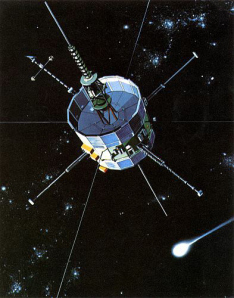
ISEE-3
Today, space exploration is an adventure where we can all participate. Consider this neat project, which recovered an old NASA spacecraft for private use. “An ambitious project to resuscitate an abandoned spacecraft finally met with success Thursday as amateur astro-engineers took control of the International Sun-Earth Explorer.” NBC News
The space craft, called ISEE-3, originally operated in a halo orbit about the L1 Sun-Earth Lagrangian point. It was the first spacecraft placed at this “libration point”, proving that such a suspension between gravitational fields was possible. Wikipedia
ISEE-3 originally studied space weather, was repurposed and repositioned to pass through a comet’s tail, and then returned to studying the sun and cosmic rays. NASA shut it down shortly before the turn of the 21st century and donated it to the Smithsonian Museum. I wonder if it was the only museum display housed in space?
Despite its antiquated 1970s technology, this craft can still do science, and 12 of its 13 instruments to measure plasmas, energetic particles, waves, and fields still function. Now, a crowd-funded project to reboot the spacecraft has paid off. On a shoestring budget of $150,000 (there must be a huge amount of volunteer effort on this project), Space College Foundation has reestablished control. If the craft can be induced to modify its orbit in the next couple weeks, ISEE-3 will resume its study of solar weather. It may even chase another comet someday. Spacecollege.org
Illustration from public domain








June 4, 2014
Across the World – a Poem by Kate Rauner
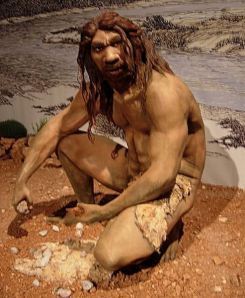
Model of a wild human
Some humans left from Africa,
Walked past the Nile’s mouth;
Spread north and west and eastward
Before they could turn south.
South from today’s Bering Straight,
Wherever hunting led,
Twelve millennia ago
Through a New World spread.
Once Europe traveled westward
They met their ancient kin;
Too long apart, their sicknesses
Replaced the mortal sin.
They clashed as tribes have always,
And yet mankind survives;
Neotenized since Pleistocene,
Domesticated, thrives.
Inspired by National Geographic








May 31, 2014
Largest Land Animal Ever

Human vs Titanosaurs; licensed under Creative Commons Attribution 3.0 Unported

Look at that magnificent neck and tail; how’s it do that? licensed under Creative Commons Attribution 3.0 Unported
The largest dinosaur ever has been found in Argentina… or, maybe not, as Brian Switek writes in National Geographic. The long-necked, long-tailed dinosaurs I still think of as brontosaurus (as an early find was called when I was a kid) are fascinating. How they managed that neck and tail, and supported the massive body in the middle, was so hard to imagine that they were once depicted living semi-aquatically, so swamp water could help hold them up. I am happy that scientists now see them as more active, holding those long necks out regally; it just seems right.
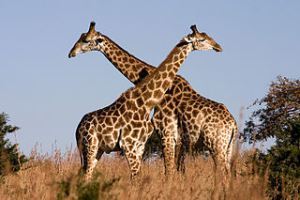
The giraffe’s neck is not quite the same thing; licensed under the Creative Commons Attribution-Share Alike 2.5 Generic
These creatures are usually known from very few bones, and sometimes bones of different individuals were assembled together, so a lot of extrapolation and guess-work goes into estimating size. “Prehistoric creatures ballyhooed as ‘the biggest ever’ upon discovery have a tendency to shrink by time of publication.” But I don’t think the exact size changes my feelings; any 50 ton (roughly), 100 foot long (ish) creature is amazing. And, as Switek says about this latest find, “the best part of the discovery is that paleontologists have turned up many bones from multiple individuals, offering paleontologists a wealth of material to investigate how these ancient animals lived. Size isn’t everything.”








May 28, 2014
Weirder Than You Think – a poem by Kate Rauner
Ctenophores of oceans wide,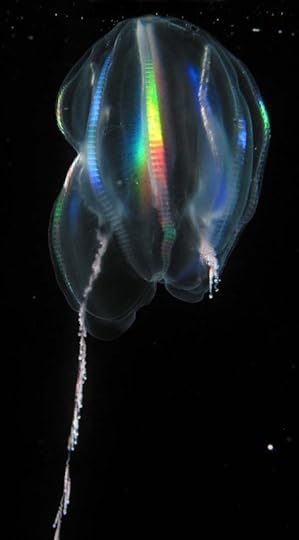
Iridescent jellies,
Are carnivores of tiny prey,
A swimming mouth and belly.
It’s shaken up our notions
Of how animals evolved
A complex nervous system,
Gives a problem to be solved.
It’s missing genes essential
To build its neural net,
And uses different chemicals
To transmit signals, yet,
It has, for half a billion years
Evolved in its own way,
And left its progeny so strange
To puzzle us today.
Thanks to National Geographic and Doubtful News
Illustration from NOAA, Public Domain








May 24, 2014
Accessing the Holy Grail of Science Writing in Better Words
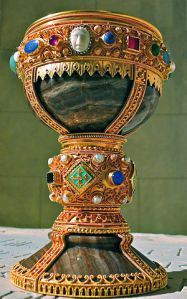
Caliz de Donna-Urraca: One of several cups claimed to be the Holy Grail
Is your writing weighed down with clichés? Carl Zimmer has an interesting site: , a crowd-sourced style guide. While his guide is intended for science journalism, other writers may find it useful, too. The site lists words and phrases that are misused or misleading, lack meaning, are pompous, or are simply hard to read; with suggested alternatives. Take that, paradigm shift!
Illustration is licensed under Creative Commons Attribution-Share Alike 3.0 Unported.








May 21, 2014
Prodigious Ostracod – a poem by Kate Rauner
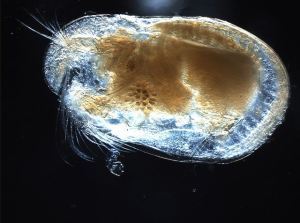
Creative Commons Attribution-Share Alike 3.0 Unported license
When you’re a little shrimp
Life’s an endless danger;
Today or untold years ago,
You really mustn’t linger.
Little bitsy ostracods
Buried as they mated
Preserving sperm that are quite odd;
Longer than their creators.
Defeated by a clump of dirt,
Perhaps by some bats’ poo,
Your children may have never swum
Eternal now are you.
Learn more








May 20, 2014
New Header Added
Hi everyone,
I changed the header for my blog today. The shapes have significance… but you’ll have to wait for my new science fiction book to be published this summer to find out more.
Kate








May 17, 2014
Rewilding with Extinct Species
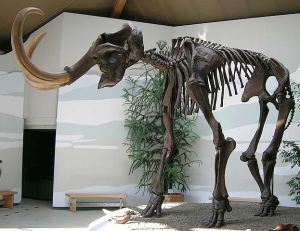
Will the wooly mammoth remain extinct? public domain
Science will soon be able to recreate extinct species , at least where viable DNA can be recovered from museum specimens. The Spanish bucardo, a wild sheep, has already been cloned. Scientists are also at work to reconstruct passenger pigeons and Tasmanian tigers, but the holy grail will be to bring back the wooly mammoth.
Not everyone thinks we should bring back extinct species. We can’t even protect the endangered species on Earth today, so diverting resources may be foolish. In most cases, ecosystems have changed so it is not clear the animals could ever be turned loose into the wild. But the public excitement these species could generate might slop over to help protect less charismatic creatures. I like this last argument. Perhaps the wooly mammoth could carry the banner for all endangered species. Plus, it would be really cool to see a living, breathing mammoth.








May 14, 2014
Rhyme and Reason – Poetry Collection Available
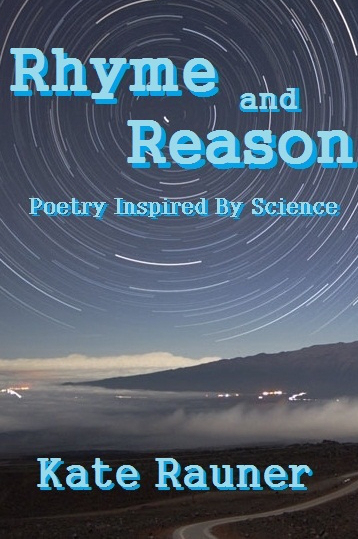 A collection of my science-inspired poetry is now available. You may purchase the collection on Amazon or download a FREE copy from Smashwords in all major e-formats . In the next few days the collection will also be available FREE from most on-line booksellers: Barnes and Noble, Inktera, Versent, Kobo, Apple, Diesel, and Flipkart.
A collection of my science-inspired poetry is now available. You may purchase the collection on Amazon or download a FREE copy from Smashwords in all major e-formats . In the next few days the collection will also be available FREE from most on-line booksellers: Barnes and Noble, Inktera, Versent, Kobo, Apple, Diesel, and Flipkart.
Thanks to all of you who visit my blog, and follow, like, and comment on my work. I hope you’ll enjoy the book.












